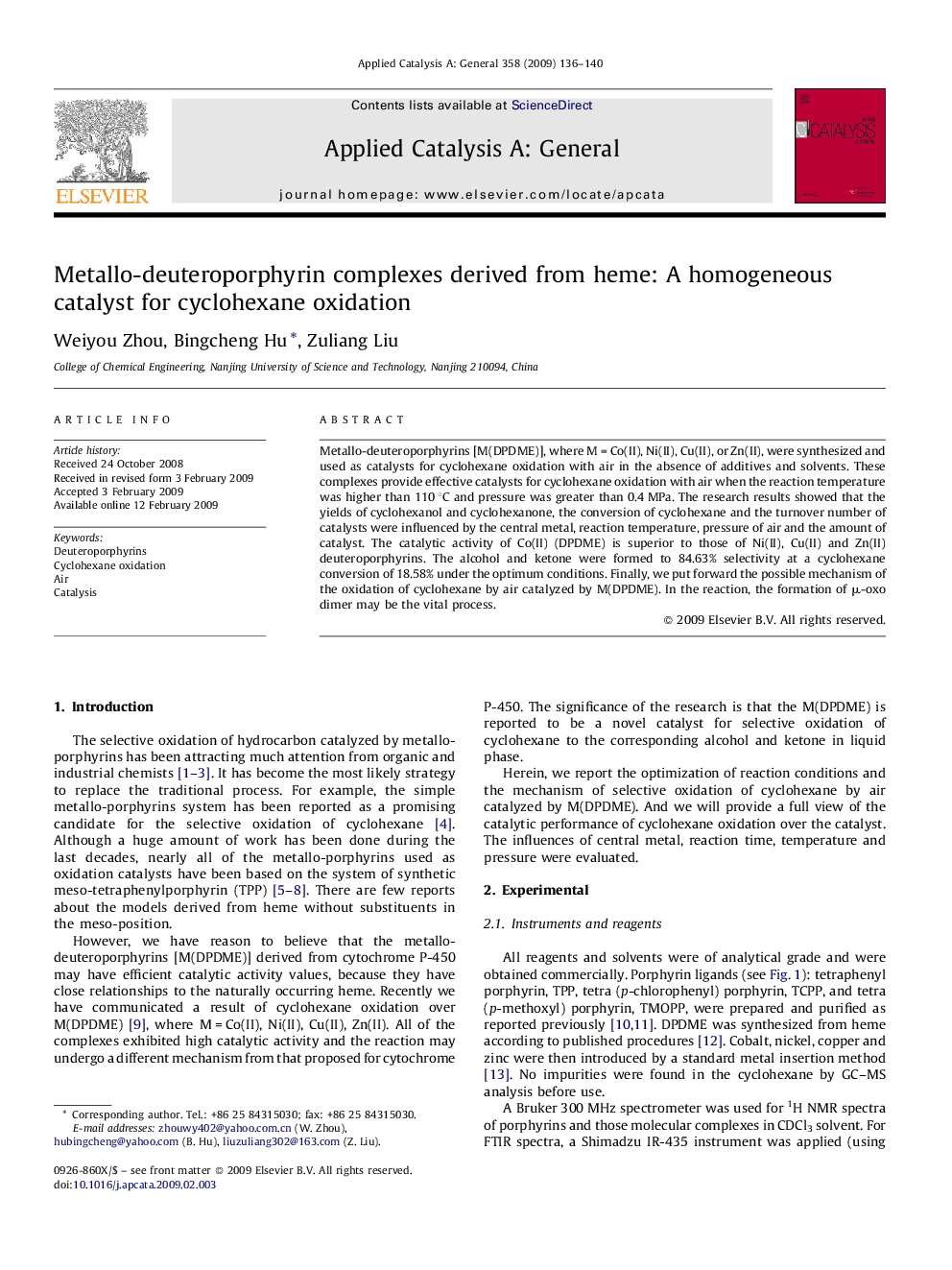| Article ID | Journal | Published Year | Pages | File Type |
|---|---|---|---|---|
| 43124 | Applied Catalysis A: General | 2009 | 5 Pages |
Metallo-deuteroporphyrins [M(DPDME)], where M = Co(II), Ni(II), Cu(II), or Zn(II), were synthesized and used as catalysts for cyclohexane oxidation with air in the absence of additives and solvents. These complexes provide effective catalysts for cyclohexane oxidation with air when the reaction temperature was higher than 110 °C and pressure was greater than 0.4 MPa. The research results showed that the yields of cyclohexanol and cyclohexanone, the conversion of cyclohexane and the turnover number of catalysts were influenced by the central metal, reaction temperature, pressure of air and the amount of catalyst. The catalytic activity of Co(II) (DPDME) is superior to those of Ni(II), Cu(II) and Zn(II) deuteroporphyrins. The alcohol and ketone were formed to 84.63% selectivity at a cyclohexane conversion of 18.58% under the optimum conditions. Finally, we put forward the possible mechanism of the oxidation of cyclohexane by air catalyzed by M(DPDME). In the reaction, the formation of μ-oxo dimer may be the vital process.
Graphical abstractMetallo-deuteroporphyrins were synthesized and used as catalysts for cyclohexane oxidation with air in the absence of additives and solvents. These complexes provide effective catalysts for cyclohexane oxidation with air when the reaction temperature was higher than 110 °C and the pressure was greater than 0.4 MPa. In the reaction, the formation of μ-oxo dimer may be the vital process.Formula of the main metallo-porphyrins mentioned in the text. Deuteraporphyrin dimethylester, DPDME, R1 = CH3, R2 = H, R3 = CH2CH2COOCH3; tetraphenylporphyrin, TPP, R1 = H, R2 = phenyl, R3 = H; tetra(p-methoxyphenyl)porphyrin, TMOPP, tetra(p-chlorophenyl)porphyrin, TCPP, R1 = H, R2 = p-chlorophenyl, R3 = H. M = Co, Cu, Zn, Ni.Figure optionsDownload full-size imageDownload as PowerPoint slide
